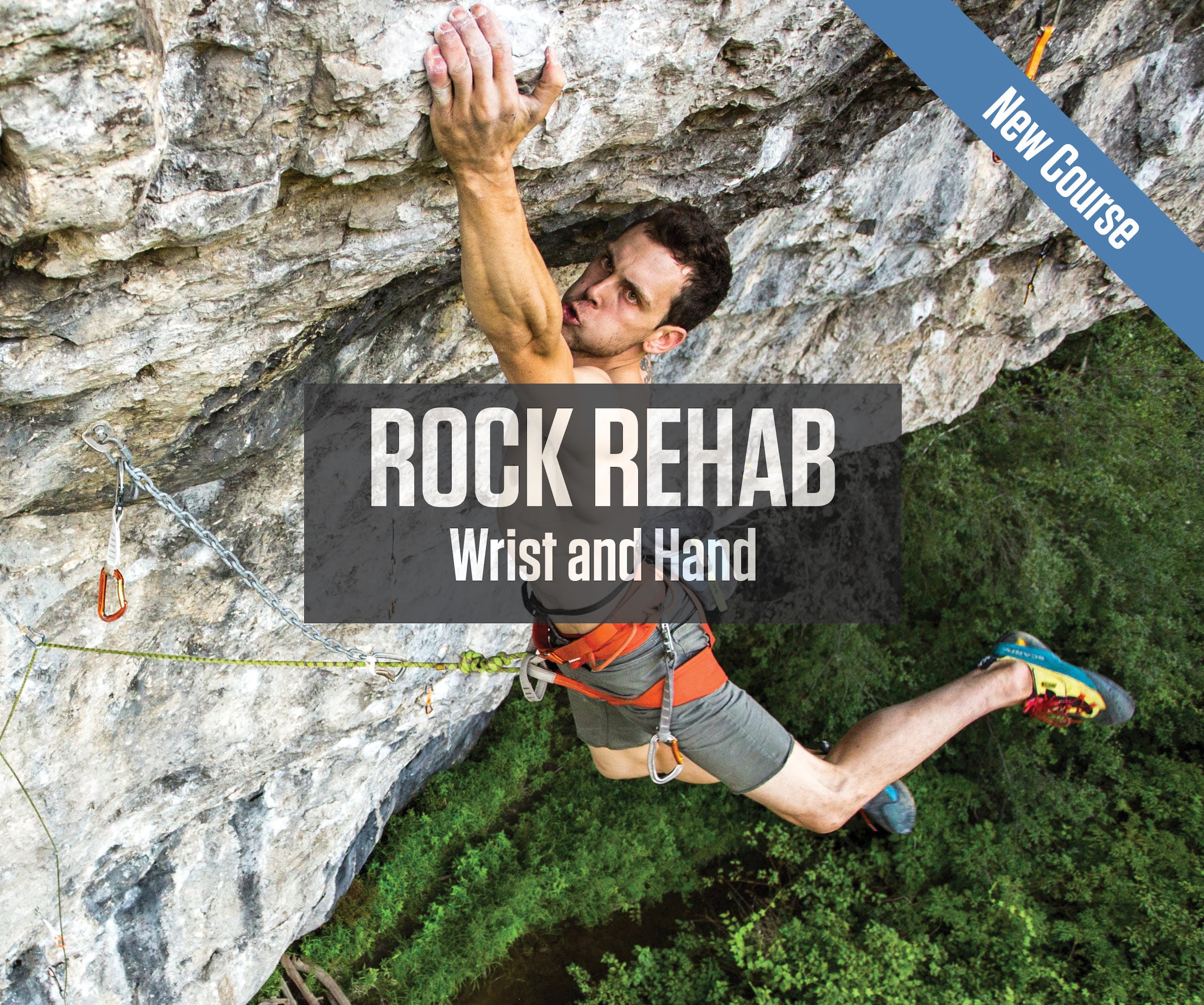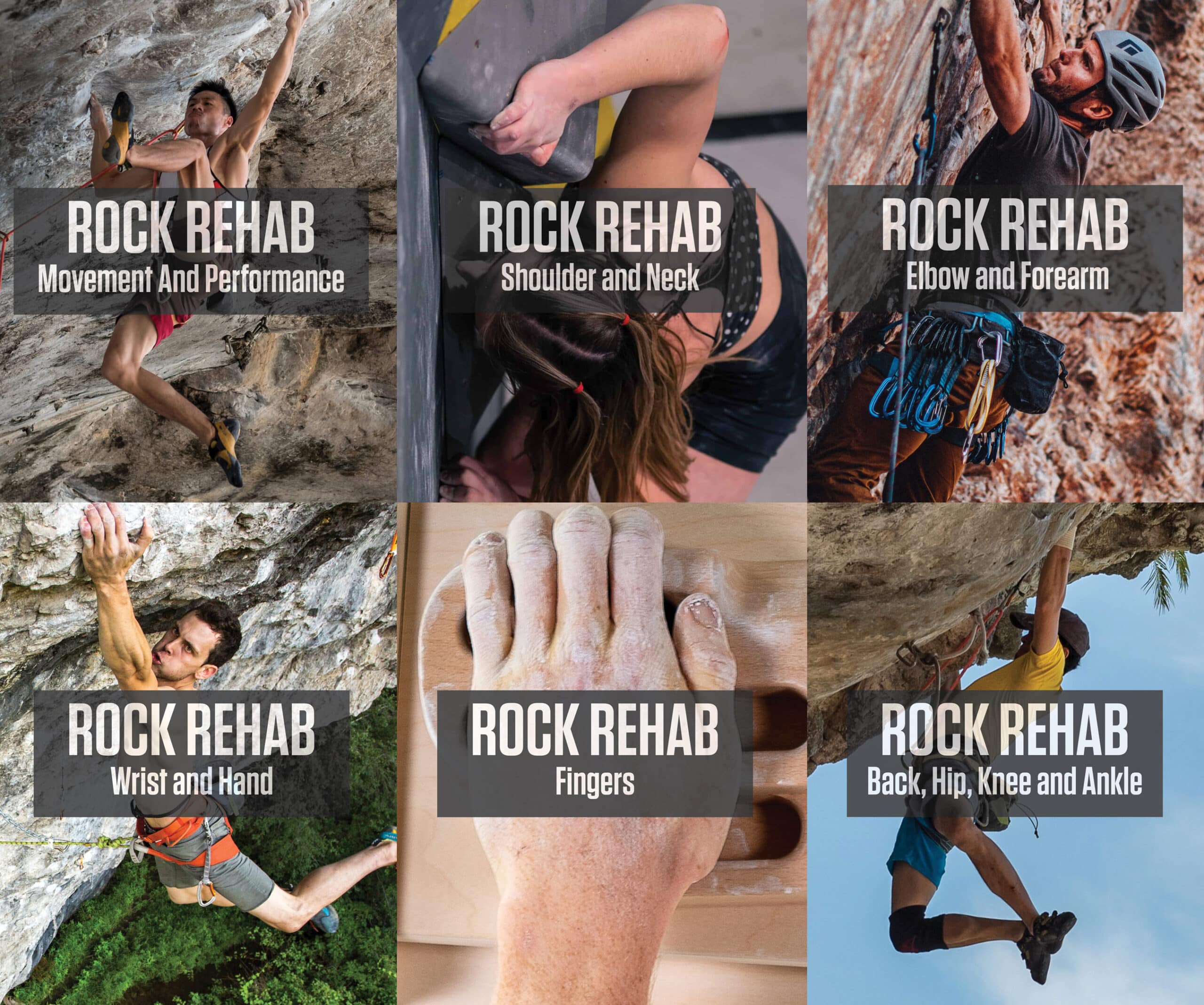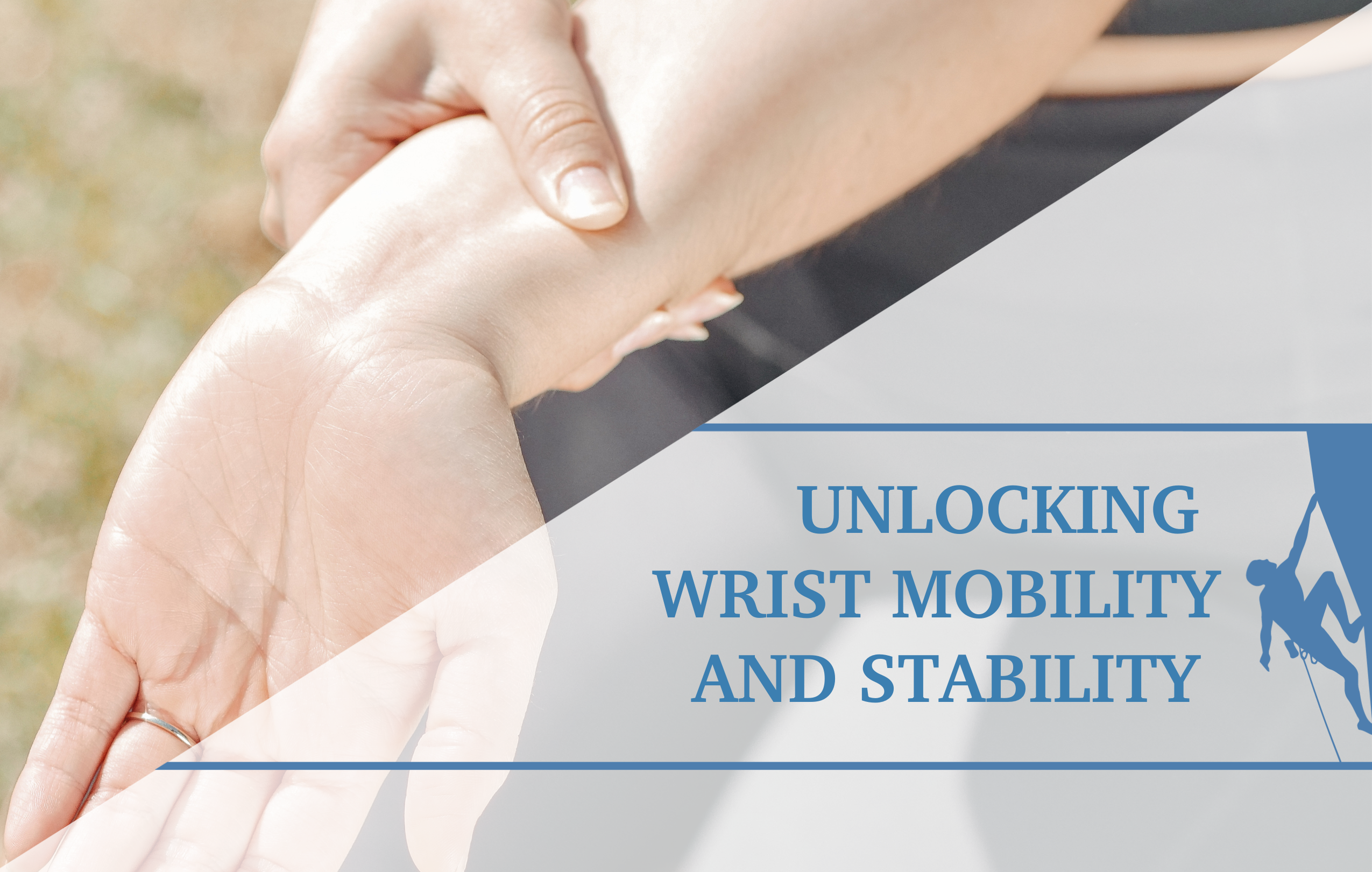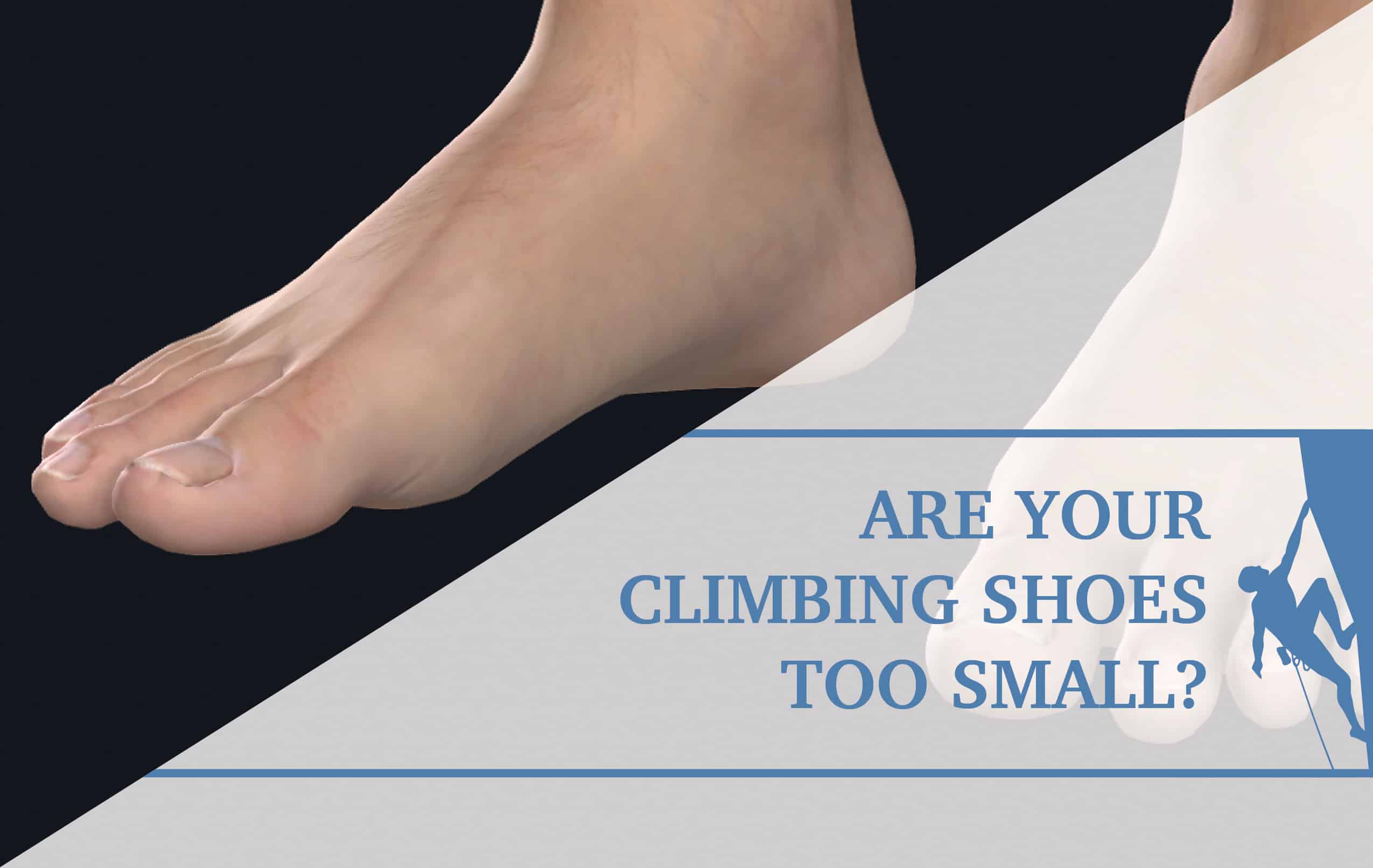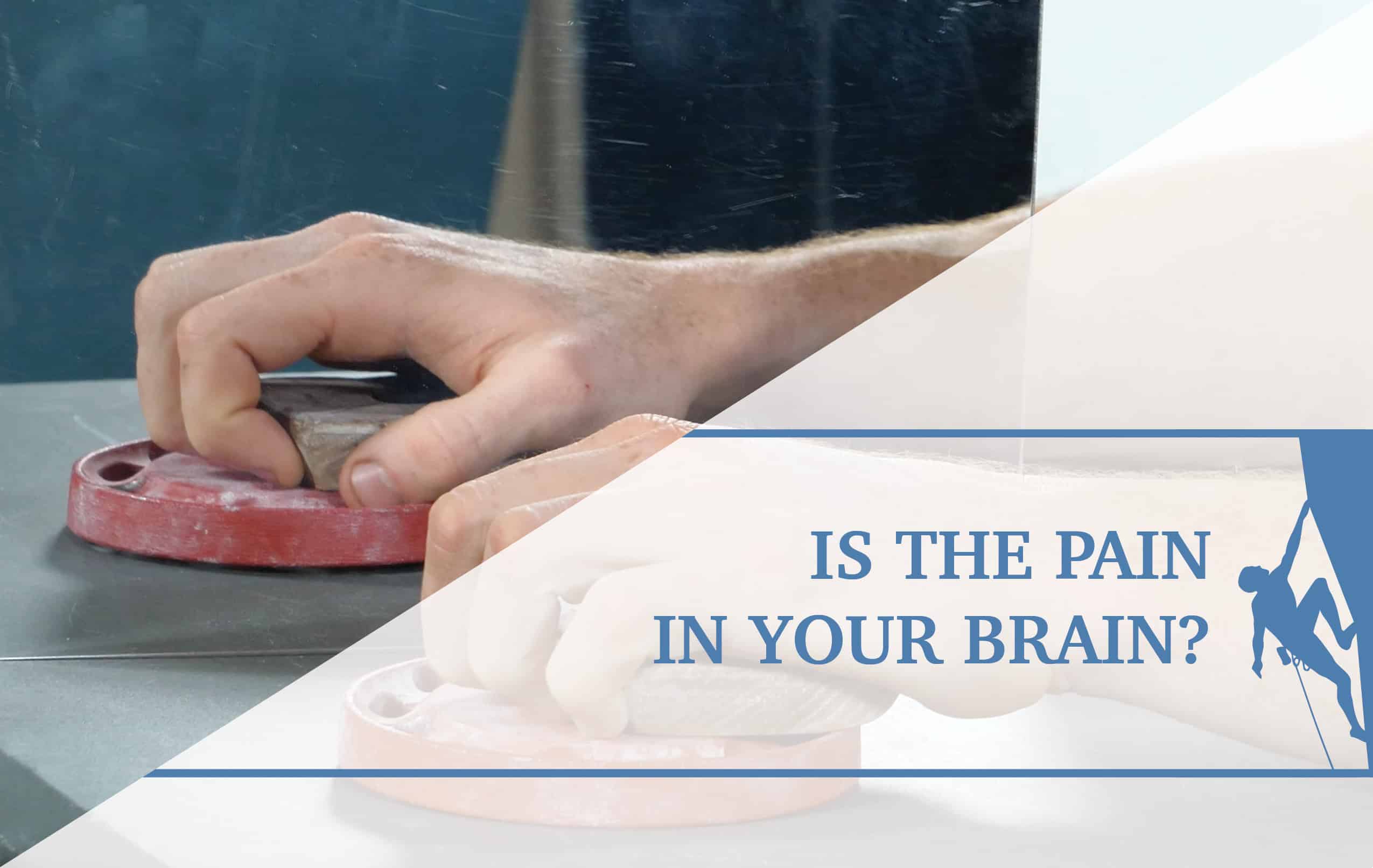Dupuytren’s Disease in Rock Climbers
If a climber presents with palmar nodules in their hand—mostly the ring finger, followed potentially by the little and middle fingers—they may have something called Dupuytren’s disease, also known as Dupuytren’s contracture. This is typically not painful, and it may potentially be genetic. See below for a description of the symptoms
Location
- Palmer nodules in the hand with the ring finger followed by the little and middle fingers are most commonly affected. Typically not painful
What Causes It
- Hypothesis of increased prevalence in climbers repetitive trauma to the palmar fascia predisposes to the development of Dupuytren’s disease
- Palmar fascia changes from collagen type I to collagen type III, which is significantly thicker
- Can progress into decreased range of motion
There are different mechanisms and hypotheses for how this may occur. One hypothesis regarding the increased prevalence of this condition in rock climbers may be its development as the result of repetitive trauma to the palmar fascia. Thus, rock climbing may predispose people to Dupuytren’s disease. However, this is just theoretical.
With Dupuytren’s disease, the palmar fascia changes from collagen type I to collagen type III, which is significantly thicker, and nodules start appearing in the palm. The progression of this condition may further lead to a decreased range of motion, making it very difficult for climbers to fully extend their fingers.
As you can see from the image above, observation is one of the best ways to determine whether or not someone has Dupuytren’s contracture. In addition to observation, research has been performed on rock climbers specifically to develop a self-diagnostic tool for climbers.
A Self-diagnostic Tool for Dupuytren’s Disease
Pervulesko and colleagues conducted a study where they looked at developing a self-diagnostic tool for climbers to identify Dupuytren’s contracture. The study involved 61 climbers: 46 men and 15 women with a mean age of 32. Using a self-diagnostic tool, 8.2% of the climbers in this study had a clinical diagnosis of Dupuytren’s contracture. There were no false negatives, although there were three false positives in the sample.
Based on these results, the sensitivity of the self-diagnostic tool in this sample was 100%, and its specificity was 94.9%. This means this questionnaire is an accurate and precise self-diagnostic tool, specifically for rock climbers, to determine the diagnosis of Dupuytren’s disease.
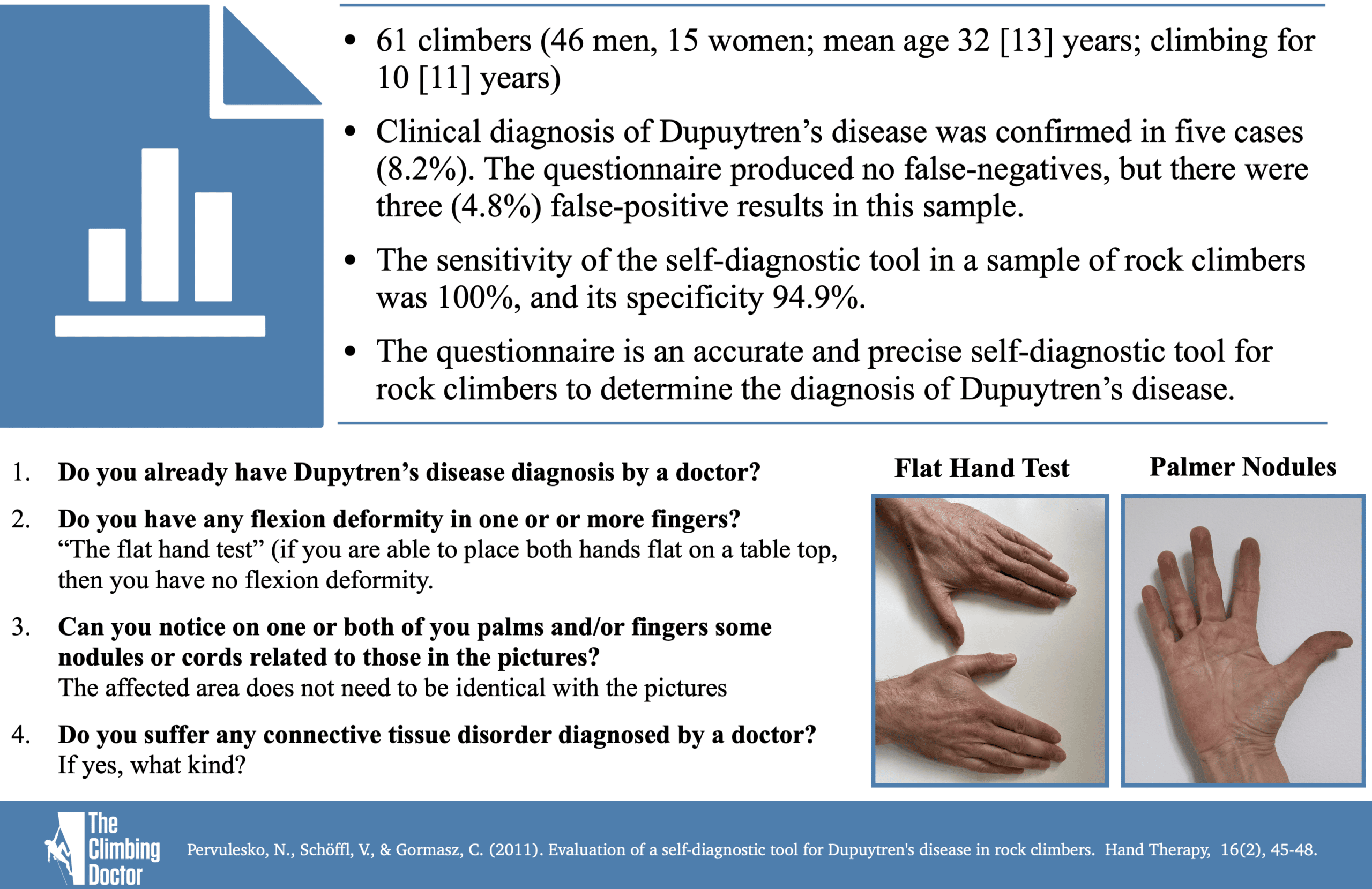
A Diagnostic Tool For Dupuytren’s
In the study they developed a self-diagnostic tool for climbers to determine if they have Dupuytren’s disease. Below are the four questions on the test.
- Do you already have a Dupuytren’s disease diagnosis by a doctor? This one is fairly straightforward.
- Do you have any flexion deformity in one or more of your fingers? This can be performed by the flat hand test. In the image above, you can see an example of the flat hand test: place your hands flat on the table to determine if you can fully press your hands into the table. See if there’s a difference between fingers or hands.
- Can you notice on one or both of your palms and/or fingers some nodules or cords related to those in the pictures? The image above on the right shows palmar nodules caused by Dupuytren’s contracture. Of course, the affected area does not need to be identical to the same area in the picture, as this can occur in different parts of the hand.
- Do you suffer any connective tissue disorders diagnosed by a doctor? If yes, what kind?
Climbers can use this diagnostic tool on themselves, comparing and contrasting the different tests as well as using the pictures to help determine if they may have Dupuytren’s disease.
A Possible Genetic Connection
In addition to this research, there was another study related to Dupuytren’s disease that proved quite interesting. This study was performed by Beleta and colleagues, and it specifically looked at Dupuytren’s and the influence of climbing on the progression of the disease.
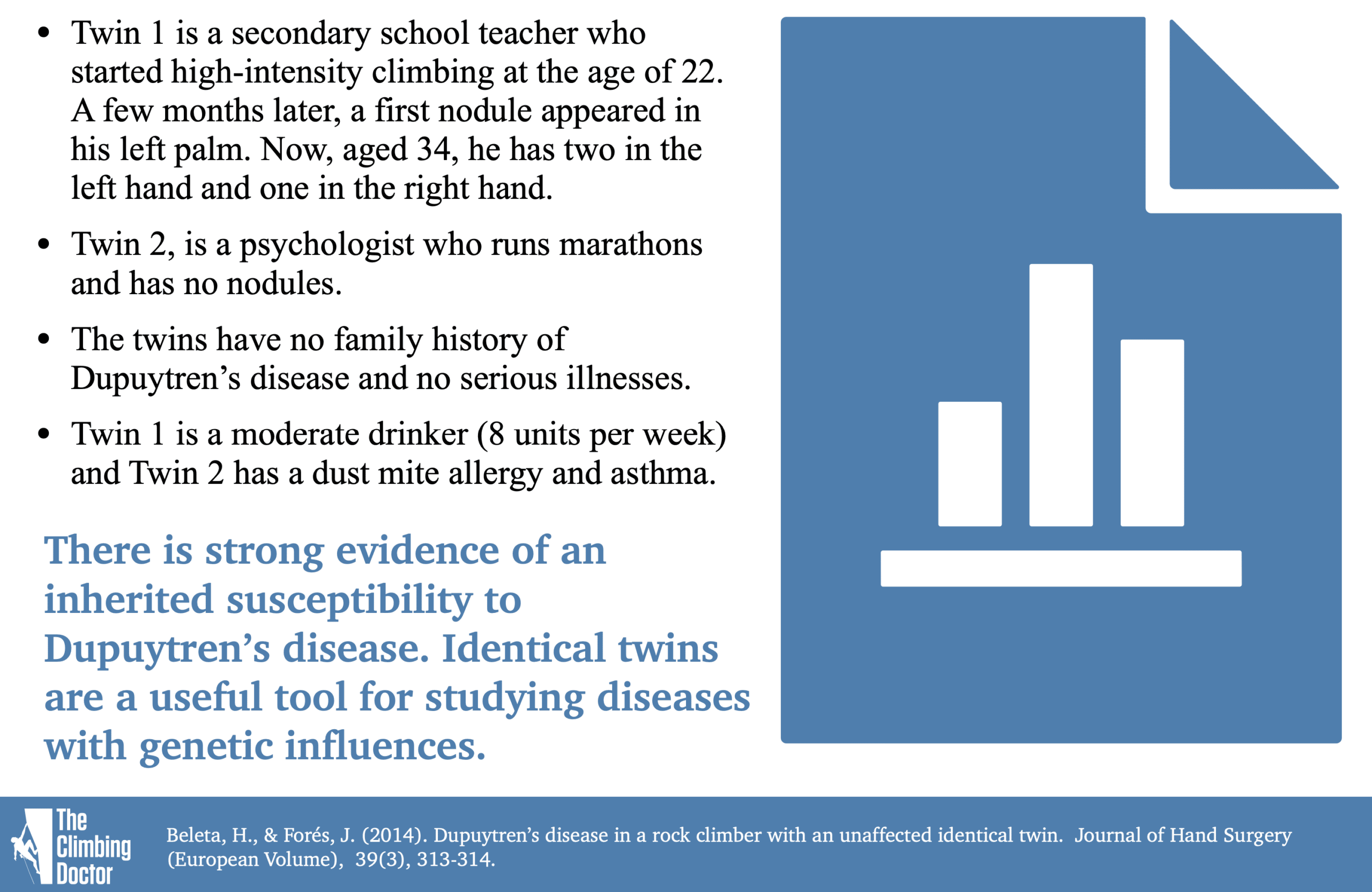
This study focused on twins: Twin 1 was a secondary school teacher who started high intensity climbing at the age of 22. A few months later, the first nodule appeared in his left palm. At the time of the study at age 34, he had two palmar nodules in his left hand and one in his right. Twin 2 was a psychologist who ran marathons and had no nodules in his hands. The twins have no family history of Dupuytren’s disease and no serious illnesses. Twin 1 was a moderate drinker, and Twin 2 had a dust mite allergy and asthma.
While this was an interesting study, a significant limitation of the study was its small sample size—a size of just two.
Regardless, there’s strong evidence that there is an inherited susceptibility to Dupuytren’s disease. By studying identical twins, you can gain greater knowledge and information when studying diseases with genetic influences.
This was a fun study in particular because it related to rock climbing: one of the twins was a rock climber, and they developed Dupuytren’s disease in their hand. It’s something to think about as it relates to genetic conditions and Dupuytren’s disease.
Dupuytren’s Exercise
If you are looking for ways to stretch out the front of your palm if you have Dupuytren’s disease, check out the exercise below to target stretching through the palm with a strength exercise.
Courses for Medical Providers and Coaches
Want to learn more ways to assess, diagnose and treat climbing shoulder and neck injuries? Check out the online course below to expand your knowledge and skillset in the management of rock climbing injuries. Click the course to learn more!
About The Author

Jared Vagy is a doctor of physical therapy who specializes in treating climbing injuries. He is the author of the Amazon #1 best-seller “Climb Injury-Free,” teaches Climbing Injury Professional Education for Medical Providers, and is the developer of the Rock Rehab Protocols. He has published numerous articles on injury prevention and lectures internationally. Dr. Vagy is on the teaching faculty at the University of Southern California, one of the top doctor of physical therapy programs in the USA. He is a board-certified orthopedic clinical specialist. He is passionate about climbing and enjoys working with climbers of all ability levels, ranging from novice climbers to the top professional climbers in the world.
For more education, check out the Instagram page @theclimbingdoctor
- Disclaimer – The content here is designed for information & education purposes only and the content is not intended for medical advice.

